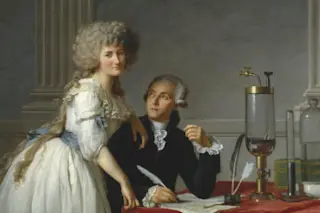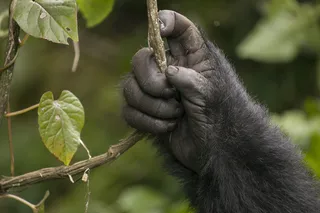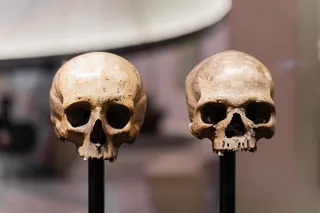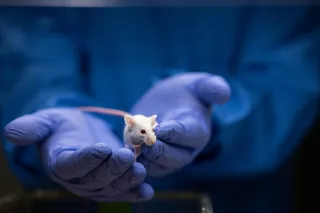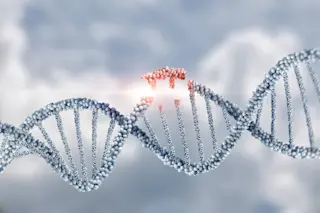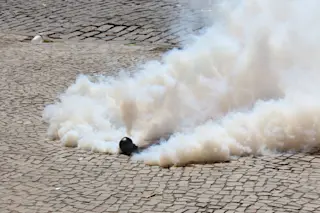Science and romance may seem like strange bedfellows, yet some of the most groundbreaking scientific advances have been made by couples working together. Like the rest of us, the scientists involved in these love affairs had their share of drama and tragedy — and their romances didn’t always end happily. Nevertheless, we honor their stories and discoveries today. Happy Valentine’s Day to them and to all science lovers!
1. Marie-Anne and Antoine Lavoisier
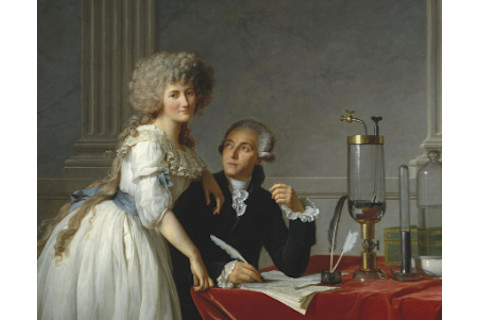
(Credit: Public domain/Wikimedia Commons)
Public domain/Wikimedia Commons
If Antoine Lavoisier is considered the father of modern chemistry, his wife Marie-Anne could be fairly called its mother. In the 18th century, Antoine (1743-1794) was one of the most respected scientists (or "natural philosophers," as they were then known) of his day. His work, the Elementary Treatise on Chemistry, was to his field what Isaac Newton’s Principia was to physics.
Among a great deal else, Lavoisier was the first scientist to recognize oxygen for what it was, particularly as it pertained to its role in combustion and human respiration, in opposition to the popular phlogiston theory of the age. He also made one of the earliest attempts to classify the elements.
In his efforts, the French nobleman was aided greatly by Lady Lavoisier (1758-1836). Theirs was an arranged marriage when Antoine was 28 and Marie-Anne just 13. As dubious as such a pairing might be today, it was common for the era and proved to be a well-made match. Marie-Anne’s knowledge of English allowed her to translate important works for Antoine and she proved to be a diligent lab manager. Her notes appear often in Antoine’s work and history records her as assisting her husband in many ways.
Alas, Lady Lavoisier could not save her husband from the guillotine. Unfortunately, the aristocratic Antoine derived most of his income from tax collections, an ill-fated occupation indeed during the French Revolution. Lavoisier and several other tax farmers, as they were known, were sentenced to death in 1794.
Read More: A World Before Scientists
Although the French government seized Antoine’s works and equipment, it was Marie-Anne who labored to have her husband’s papers published in a final memoir, expounding the principles of what was then known as the “new” chemistry. In doing so, she secured his legacy and, quite possibly, the future of chemistry as we now know it.
Antoine and Marie-Anne had no children. Marie-Anne eventually remarried but insisted on keeping the Lavoisier name as a gesture of devotion to her first husband. She died in 1836.
2. Marie and Pierre Curie

(Credit: Public domain/WikimediaCommons)
Public domain/WikimediaCommons
When people think of science power couples, the Curies usually top the list. Marie Sklodowska (1867-1934) was a Polish research student studying in Paris when in 1894 she met French physicist Pierre Curie, who soon proposed to her. They were wed a year later in a no-frills affair — biographers love to note that Marie got married in a simple blue dress that she would also wear for laboratory work.
Partners in life and in science, the couple’s fruitful work together produced the discovery of the elements polonium and radium in 1898, as well as radioactivity itself. They also produced daughter Irene a year earlier. (A second daughter, Eve, would be born in 1904.)
But it was their scientific endeavors that brought them fame when the couple, along with Henri Becquerel, won the Nobel Prize in physics in 1903. Because she was a woman, Marie was originally excluded from the award. To his everlasting credit, Pierre complained and, with the aid of sympathetic Nobel committee members, ensured Marie was rightfully acknowledged. She became the first woman — and the Curies the first married couple — to win a Nobel.
Read More: 5 Things You Didn't Know About Marie Curie
Tragically, after little more than a decade of married life, Pierre was struck and killed in a Paris street accident in 1906. Although devastated at the time, by 1911 Marie was involved in an affair with physicist Paul Langevin, which became a scandal in the press.
Nevertheless, it was Marie’s scientific work that history would remember when — also in 1911 — she was awarded a second Nobel, this time in chemistry, for her continued work in isolating radium. It would not be the last time that the Curie name would appear on the very short list of husband-and-wife Nobel laureates.
3. Irene Curie-Joliot and Jean-Frederic Joliot

(Credit: James Lebenthal/Wikimedia Commons)
James Lebenthal/Wikimedia Commons
Marie and Pierre’s daughter Irene (1897-1956) followed in her parents’ footsteps, showing an aptitude for math and physics at an early age. It couldn’t have been easy having a two-time Nobel winner as your mother. By all accounts, mom Curie was rigorous in her daughter’s educational upbringing. She had Irene privately tutored by other well-known academics of the day, and insisted on her doing daily math and other lessons even while on summer breaks.
During World War I, Irene, then a young woman, interrupted her studies at the Sorbonne and accompanied her mother to the battlefield, where they trained doctors to use early mobile X-ray equipment in the field. After the war, Irene continued as her mother’s lab assistant, and eventually earned her own doctorate in 1925. In that same year, Marie took on another assistant, Jean Frederic Joliot (1900-1958), who fell in love with the boss’s daughter. Irene and Frederic were married in 1926.
Some critics thought that this was a marriage of convenience and that perhaps Joliot was more interested in advancing his standing than wooing a bride who just happened to have a famous name. Even Marie was apparently dubious of the pairing, going so far as to insist that Frederic agree to a kind of prenuptial agreement that would ensure Irene controlled the valuable assets of Marie’s lab after her death (then a mere eight years in the future). For some time after the wedding, Marie regularly introduced her son-in-law as “the man who married Irene.” Ouch.
But the marriage appears to have been a genuine and loving one. Irene and Frederic, in a progressive move for the time, jointly changed their surname to Joliot-Curie, and had two children (who also became scientists). Also, like Pierre and Marie before them, the couple’s scientific collaborations — in this case with the creation of artificial radioactive elements — would win them a joint Nobel Prize for chemistry in 1935.
Although physically separated for some time in World War II (during which Frederic was a member of the French resistance), the couple was eventually reunited and their marriage endured until 1956, when Irene succumbed to leukemia. Frederic died just two years later.
4. Gerty and Carl Cori
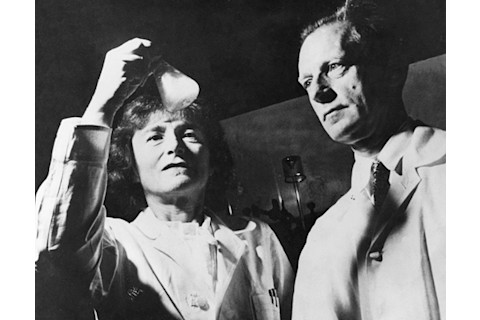
(Credit: Silvia Semeraro/CC BY-SA 4.0/Wikimedia Commons)
Silvia Semeraro/CC BY-SA 4.0/Wikimedia Commons
Compared to the Curies, the general public may not recognize the Cori name, but it towers in the annals of biochemistry, and rightly so.
At first blush, Carl Cori and Gerty Radnitz would not have seemed like the ideal couple, considering the era in which they lived. While both were born in 1896 in Prague, and both families originally came from Austria, Carl’s people were Catholic, while Gerty’s were Jewish.
In 1914, at a time when such distinctions mattered (and sometimes still do), they met as medical students at Carl Ferdinand University in Prague and quickly discovered that they shared mutual passions for both medicine and the outdoors. Carl is on record for noting his immediate attraction to Gerty and relating that he and his paramour would often “plan and study together, or go off on excursions to the countryside, or on a skiing expedition.”
The advent of World War I interrupted their romance as well as their studies. But after the war, when they weren’t “skiing,” they forged a remarkable collaboration. After graduation, they married and also published their first joint research in the same year, 1920. Within a few years, they had relocated to the United States, where despite some opposition to the idea of a husband-and-wife research team, they continued their work together in life and in the lab.
Their enduring work focused on human metabolism, specifically on how our bodies metabolize glucose. That research led to the discovery of the so-called Cori cycle, a critical part of metabolism in which lactic acid (formed in the muscles) is converted to glycogen in the liver, then broken down into glucose for use by muscle cells. In short, because our muscles require constant energy, we could not function without the Cori cycle. The discovery of this mechanism was important enough to earn the Coris the Nobel for medicine in 1947.
Unfortunately, it was around this time that Gerty was diagnosed with what would prove to be a fatal bone marrow disease. Nevertheless, Carl and Gerty continued to work together for years, until Gerty passed away in 1957. Carl died in 1984 at the age of 87, still active in the field of research that he and Gerty pioneered.



